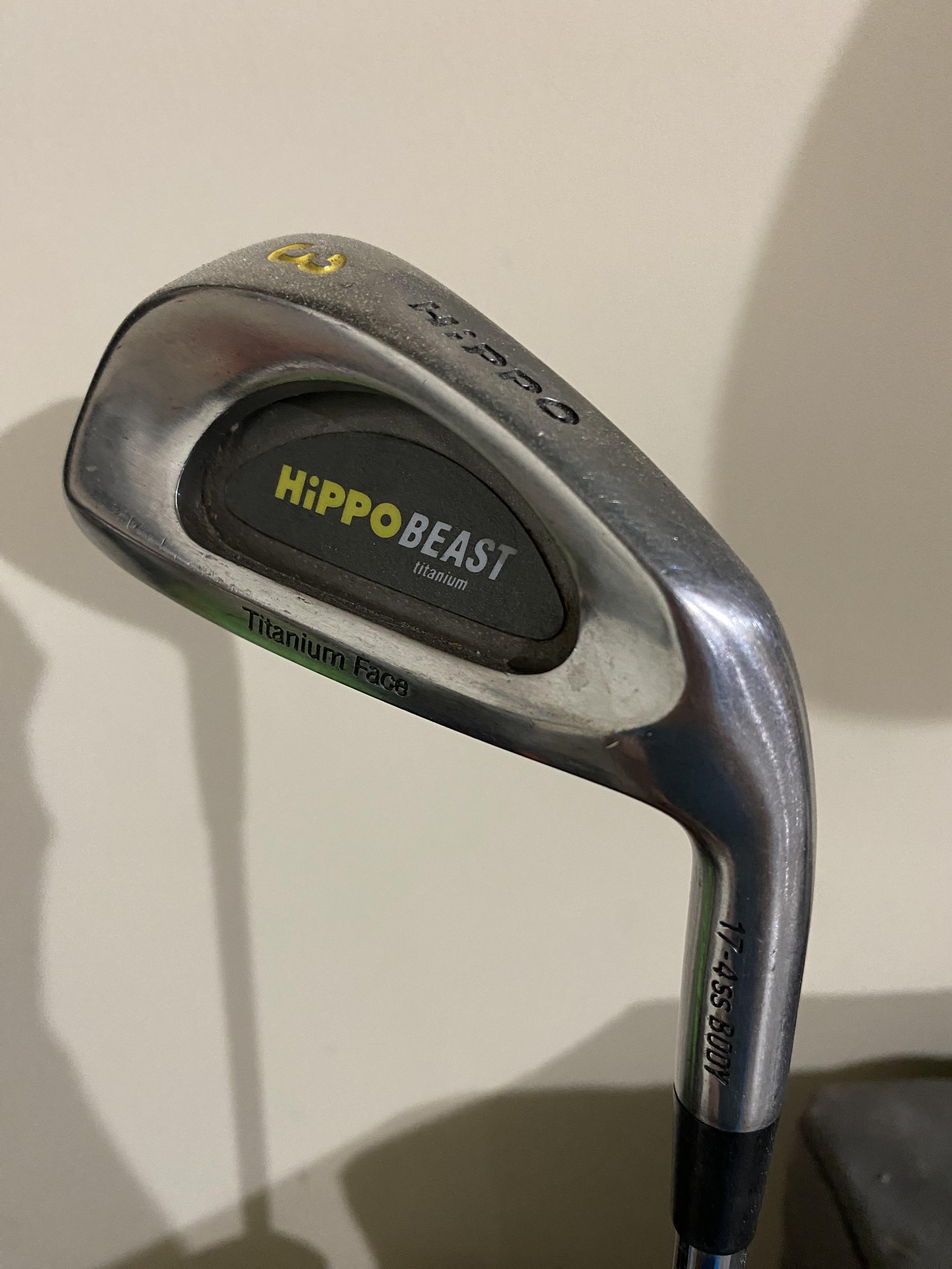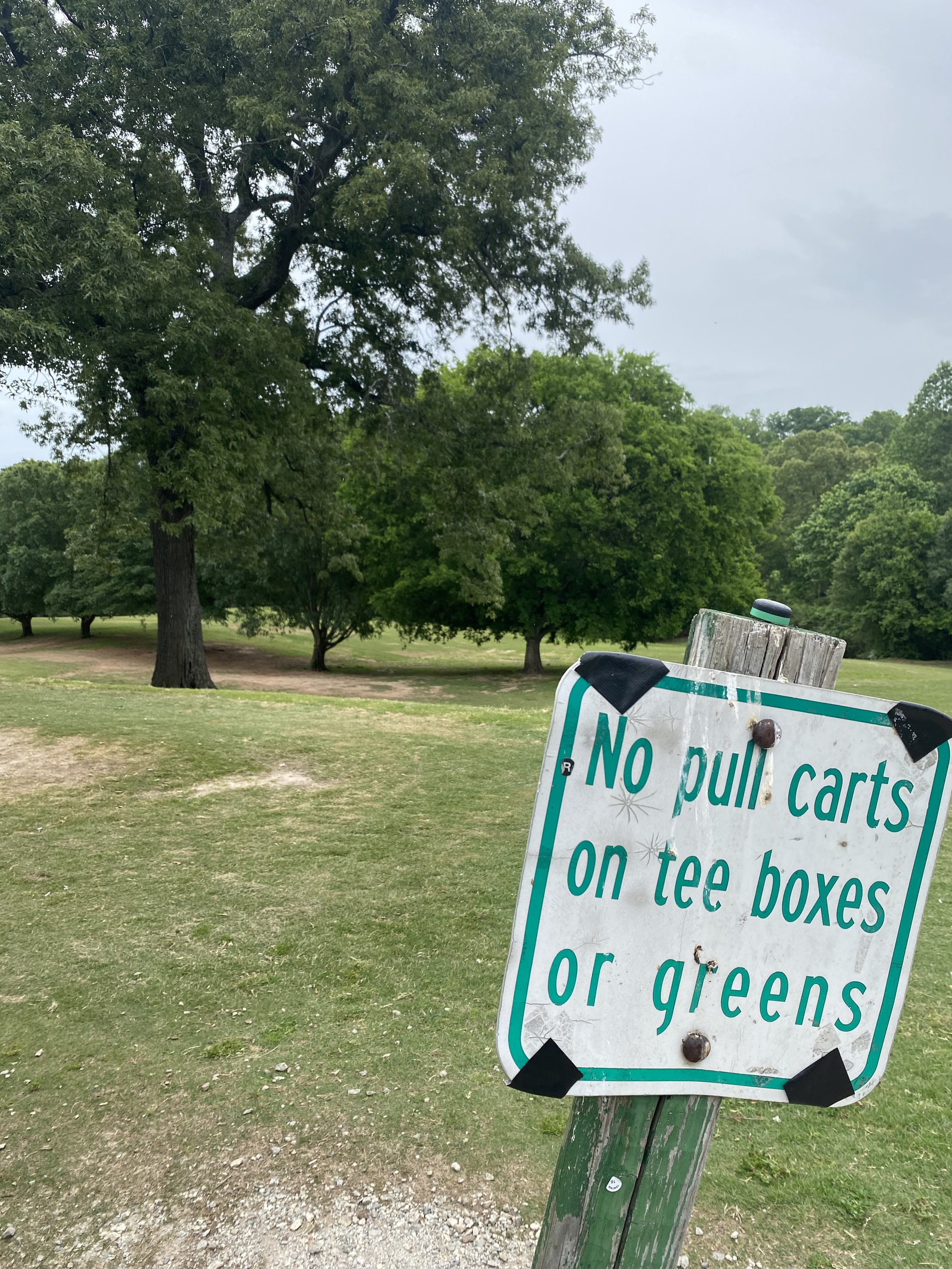In the Summer Groove - Equipment
Some may question the wisdom of allowing a 20+ handicap (thank you, net double-bogey max rule) to opine on the subject of golf performance, let alone a topic as refined as golf equipment. To those few I would say the following:
The author’s current irons…
1. Whatever my handicap, I come about it honestly;
2. Statistically, my dots put me among the majority of golfers;
3. Only by swinging “bad” to “adequate” clubs so excessively can one achieve the level of experience necessary to form an opinion on technological improvements.
I must be exactly the person to whom all these manufacturers are directing their advertising, so this should make me the perfect man for this assignment. Rest assured, the NewClub brain trust has obviously put this blog in good hands.
Despite being squarely in the crosshairs of marketing budgets with nine figures in the magazine, I very seldom purchase a new golf club. I still play the same set of Hippo Golf game improvement irons I acquired at the turn of the century. The last upgrade to that set was to drop the 3-iron back in 2019. Good riddance.
Before that, in about 2015, I upgraded my driver and fairway woods to a scuffed trio of Callaway Razr X woods. Of course, all those sky marks are from the previous owner. Shortly before that, Edwin Watts sold me new 56- and 60-degree Callaway wedges. Shortly after, I dropped the 60.
These clubs all served me well—or as well as they could—but I’ve recently gotten the seven-year itch. Don’t worry though—I’m not after one of those pretty models.
At present, I have my eye on replacing my woods with a set of Ben Hogan GS53s—the last offering in this category before owners Perry Ellis shut down the Ben Hogan brand on the back side of the pandemic. Thanks to some inspiration from recent episodes of the Bag Drop podcast, I’m also going to build a Bettinardi HLX 3.0 Forged Black C-Grind 56-degree wedge with 12-degrees of bounce. We’ll see how it goes. The parts are in the barn from eBay, and I should integrate them over the winter. But this is as far as I’ll allow myself to take it.
I’d say it’s time to replace my sand wedge.
You might wonder why a player who struggles to reduce his handicap continues to hamstring himself with dated technology and odd DIY clubs salvaged from eBay. That’s a fair question. Some of you may be thinking about starting a fund to get me to a club fitting. Instead, those who know me well might note that I, being of hillbilly stock, struggle to pay retail or throw anything away due to a genetic reflex against waste. Of course, left unchecked, this leads inevitably to a 1978 Pontiac Firebird Trans Am on blocks in my front yard. I digress. But hey, it’s an ethos.
The answer, of course, is that golfers in the largest 20+ handicap level are benefited less by upgrades in club technology than they are by practicing regularly from inside 125 yards. Instead of trying to buy a better game, why not try to improve your swing? You’ve probably seen John Daly propound this point. The one constant in golf through all the evolution of its things—balls, tees, clubs, swing aids, and such—is that the consistent, center strike remains the strongest weapon in a player’s arsenal. The closer you are to the hole, the stronger consistent striking becomes. This holds true even in the presence of poor swing habits, as long as the habit is consistent and produces consistent results. Harvey Penick wisely notes that in a match the one “to beware of is the one with the bad grip and the bad swing. He has grooved his faults and knows how to score.”
Golf is full of players grooving weird shots to their consistent benefit. Bobby Jones played a single cut-down “cleek” or 2-iron to learn the game at the age of 6 and won a junior tournament with it. His famous putter Calamity Jane, in all her repaired variations—especially after it was discovered it was far from straight—also had the loft of a 2-iron. Fellow hillbilly Sam Snead putted croquet-style and finished top-ten at two majors in the twilight of his career from 1966 until 1968. He only stopped because Bobby Jones lobbied the USGA and the R&A to adopt Rule 10.1(c). Perhaps the most entertaining, flagrant, and consistent violators of that same rule were Bob Hope and Bing Crosby. They famously made the pro-am rounds using their putters—and at least one cue—to attack the hole billiards style. Within NewClub, some have been known to groove odd shots—with questionable swings—to the eye-rolls and consternation of opponents. In so doing, matches become infinitely more interesting, unpredictable, and fun.
You can say that golf is much more to me than science, research, and technology. Instead, it’s an art form. If you’re a bad dancer, my advice would be to embrace it and love to dance.
Sign at Candler Park
With limitations of clubs in mind, I host a quasi-monthly match at Candler Park Golf Course here in Atlanta—a course as frayed and quirky as my set of clubs—and that this match requires the exclusive use of a 7-iron. This is an ongoing tribute to Roy McAvoy, the protagonist from the 1996 film Tin Cup. Perhaps you’ve seen the film taking up valuable broadcast time on Golf Channel, battling for ratings from bleary-eyed new parents, insomniac retirees, and pro shops that have lost their TV remote, interrupted by infomercials for something called “low tea.” I’m sure it makes a fine Arnold Palmer. I digress. Despite an unfortunate programming schedule and overexposure—not to mention the costume director’s overuse of pleated pants—it is a fine piece of cinema.
One of the fundamental themes of Tin Cup is the notion that, in a game of accuracy, it is the archer and not the arrow that counts most. In our version at Candler Park, participants discover something irresistible when allowed to focus on making the right shot instead of choosing the right club. Those who best manage to focus, groove their games, and score within the limitations of using a 7-iron alone end up the winners of the One-Club Classic. This vision jives with what many think competitive golf is supposed to be: to lay aside what ought to be in favor of playing in the moment with what is. In short, stop the endless search for better or more. Instead, make the most with what you’ve got.
Come out, join in, and experience the phenomenon for yourself. The Roy McAvoy 7-iron One-Club Classic meets monthly at varying dates and times. Keep an eye out and sign up in the app for a date that works for you. No one will judge you for having antiquated equipment. We look forward to expanding the community. #playandpollinate


